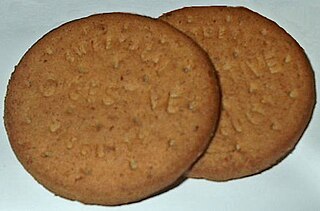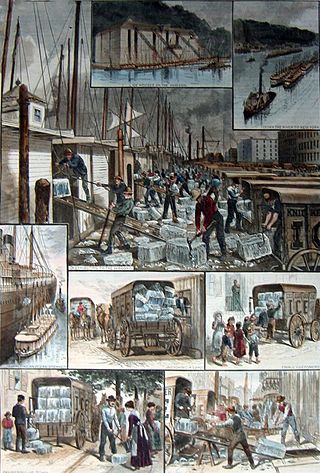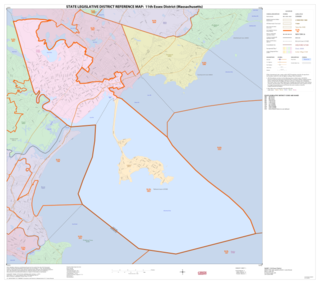
Wenham is a town in Essex County, Massachusetts. The population was 4,979 at the time of the 2020 census.

Sutton is a town in Merrimack County, New Hampshire, United States. The population was 1,978 at the 2020 census. Sutton includes the villages of Sutton Mills, North Sutton, South Sutton and East Sutton. North Sutton is home to Wadleigh State Park on Kezar Lake.

Isabella Mary Beeton, known as Mrs Beeton, was an English journalist, editor and writer. Her name is particularly associated with her first book, the 1861 work Mrs Beeton's Book of Household Management. She was born in London and, after schooling in Islington, north London, and Heidelberg, Germany, she married Samuel Orchart Beeton, an ambitious publisher and magazine editor.

A digestive biscuit, sometimes described as a sweet-meal biscuit, is a semi-sweet biscuit that originated in Scotland. The digestive was first developed in 1839 by two doctors to aid digestion. The term digestive is derived from the belief that they had antacid properties around the time the biscuit was first introduced due to the use of sodium bicarbonate as an ingredient. Historically, some producers used diastatic malt extract to "digest" some of the starch that existed in flour prior to baking.

Mrs. Beeton's Book of Household Management, also published as Mrs. Beeton's Cookery Book, is an extensive guide to running a household in Victorian Britain, edited by Isabella Beeton and first published as a book in 1861. Previously published in parts, it initially and briefly bore the title Beeton's Book of Household Management, as one of the series of guidebooks published by her husband, Samuel Beeton. The recipes were highly structured, in contrast to those in earlier cookbooks. It was illustrated with many monochrome and colour plates.

Edward Clarke Cabot was an American architect and artist.

Barley sugar is a traditional variety of boiled sweet, often yellow or orange in colour, which is usually made with an extract of barley, giving it a characteristic taste and colour. In Britain it is usually sold in the shape of twisted sticks. Barley sugar is very similar to clear toy candy and to hard caramel candy in its texture and taste.

Henry Howland Crapo was a businessman and politician who was the 14th governor of Michigan from 1865 to 1869, during the end of the American Civil War and the beginning of Reconstruction.

Wenham Lake is a 224-acre body of water located in Wenham and Beverly towns, Essex County, Massachusetts.The lake receives water from the water table, a system of streams, the Putnamville Reservoir, and the Ipswich River. In the 19th century, the lake was an important source of ice for export, especially to Britain. Wenham Lake is now a reservoir for the Salem and Beverly Water Supply Board.

Ward, Lock & Co. was a publishing house in the United Kingdom that started as a partnership and developed until it was eventually absorbed into the publishing combine of Orion Publishing Group.

Tutti frutti is a colorful confectionery containing various chopped and usually candied fruits, or an artificial or natural flavouring simulating the combined flavour of many different fruits and vanilla.

Sponge cake is a light cake made with eggs, flour and sugar, sometimes leavened with baking powder. Some sponge cakes do not contain egg yolks, like angel food cake, but most of them do. Sponge cakes, leavened with beaten eggs, originated during the Renaissance, possibly in Spain. The sponge cake is thought to be one of the first non-yeasted cakes, and the earliest attested sponge cake recipe in English is found in a book by the British poet Gervase Markham, The English Huswife, Containing the Inward and Outward Virtues Which Ought to Be in a Complete Woman (1615). Still, the cake was much more like a cracker: thin and crispy. Sponge cakes became the cake recognised today when bakers started using beaten eggs as a rising agent in the mid-18th century. The Victorian creation of baking powder by British food manufacturer Alfred Bird in 1843 allowed the addition of butter to the traditional sponge recipe, resulting in the creation of the Victoria sponge. Cakes are available in many flavours and have many recipes as well. Sponge cakes have become snack cakes via the Twinkie.
Isaac Newton Watt (1821–1886) was a soldier, merchant and a Member of Parliament in Taranaki, New Zealand in the mid-to-late 19th century.

The ice trade, also known as the frozen water trade, was a 19th-century and early 20th-century industry, centering on the east coast of the United States and Norway, involving the large-scale harvesting, transport and sale of natural ice, and later the making and sale of artificial ice, for domestic consumption and commercial purposes. Ice was cut from the surface of ponds and streams, then stored in ice houses, before being sent on by ship, barge or railroad to its final destination around the world.

Eliza Warren née Jervis (1810–1900) was an English writer on needlework and household management, and editor of the Ladies' Treasury magazine. She was best-known professionally by the pen-name Mrs. Warren, but after a second marriage was also known as Eliza Francis and Eliza Warren Francis.

Hannah Lynch was an Irish feminist, novelist, journalist and translator. She spent much of her working life in Paris.

Massachusetts House of Representatives' 4th Essex district in the United States is one of 160 legislative districts included in the lower house of the Massachusetts General Court. It covers part of Essex County. Democrat Estela Reyes has represented the district since 2023.

Massachusetts House of Representatives' 11th Essex district in the United States is one of 160 legislative districts included in the lower house of the Massachusetts General Court. It covers part of Essex County. Democrat Peter Capano of Lynn has represented the district since 2019.



















